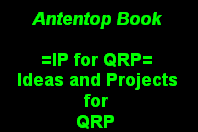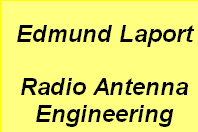

Antentop is FREE e-magazine devoted to Antennas and Amateur Radio an
Special page devoted to
Receiving Antennas for LW and MW Band

Custom Search
|
ANTENTOP-
01- 2021, # 025
|
Receiving Antennas for LW and MW Band |
|
Receiving
Antennas for LW and MW Band |
|
|
|
|
|
Amateur radio already has got LW bands- it is 2200-
m (136- kHz) and 630- m (473- kHz). These interesting bands need
not only transmitting but receiving antennas. The article is described
several designs of receiving antennas for LW band. At first I would like to introduce old but very
useful article in Radio- Electronics magazine. It was published
in the issue of June 1983 and described very interesting
variant of the loop antenna for VLF- LF. It was article Loop Antennas for VLF- LF: R.W. Burhans,
pp/: 83- 87, the full article you may found at https://archive.org/details/radio_electronics_1983-06/mode/2up Inside of the article it was part that described
very interesting design of the receiving loop antenna made on
a ferrite rod. The quota from the article described the ferrite
loop antenna is below. Balanced Loops As discussed previously, to obtain the best null performance, loop antennas should be operate so
that the capacitance between the antenna and electrostatic shield
is the same at all points along the loop. With single winding
that's a problem, since one end of the winding has to be grounded
in some way. A loop with a center- tapped winding is often
used together with a preamp with a balanced input, but there is
a better way of winding loops on long ferrite- rods that also
reduces the inductance of the whole winding and result in a single-
ended terminal for the loop. The technique, developed by the U.S. Army
Signal Corps many years ago, involves right- hand- and left- hand-
sense windings starting at the center of the core. The resulting
loop, shown in Fig.9, still has opposite- phase nulls of opposite ends, but now has excellent
electrostatic symmetry with respect to the trough shield. The
sensitivity of this coil the same as that of a coil wound in a
single direction from one end to the other, but the inductance
is reduced, resulting in a higher self- resonant frequency. The termination point in the center of the core practically eliminates
induction- field noise- pickup, even with a single- ended preamplifier
system.
|
Radio- Electronics June- 1983 When winding a coil with
a relatively large number of turns, it is advisable to check the
winding for inductive balance because the ferrite core material
may not be uniform from end to end. Another factor contributing
to non-uniformity is that it is difficult to wind a perfectly
spaced coil by hand. That is why the figures indicating the number
of turns on each side described in Table 1 are different. To tune the balanced- loop
coil arrangement shown in Fig.
9 to resonant at 60- kHz, a fixed capacitor to about
500 pF can be placed in parallel with a small variable capacitor
of up to 350 pF (and the 330- pF distributed capacitance of the
coils). Ferrite rod antennas, almost similar to described
above, were tested by the Russian amateurs. Results were pasted at forum at radioscanner.ru. I would like stopped
by several designs of the antenna. |
|
|
|
|
Page- 79 |
|
 |
 |
|
 |
|
|
|||
Just for Fun:

Powered byIP2Location.com
Thanks for your time!
Last Updated:
December 30, 2021 23:18






